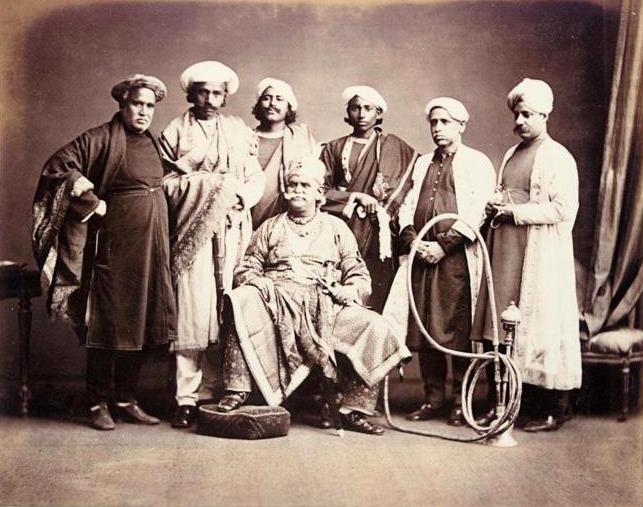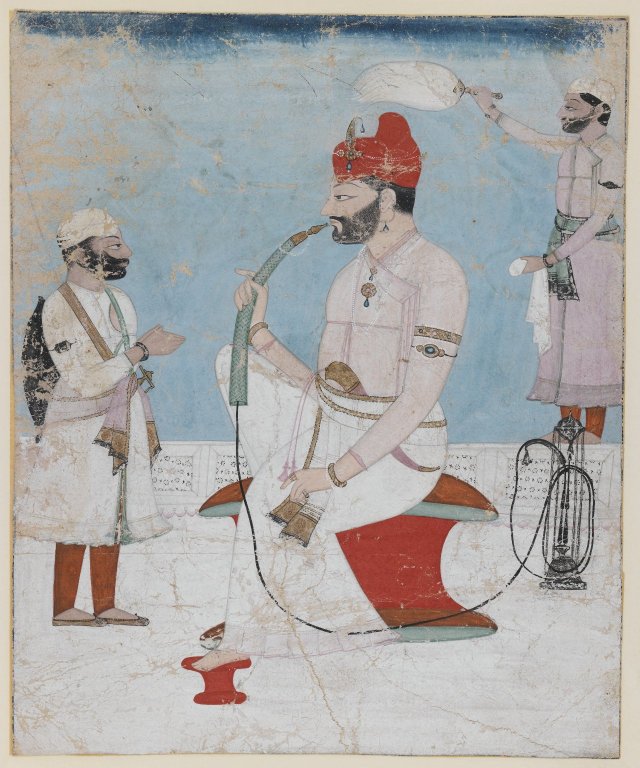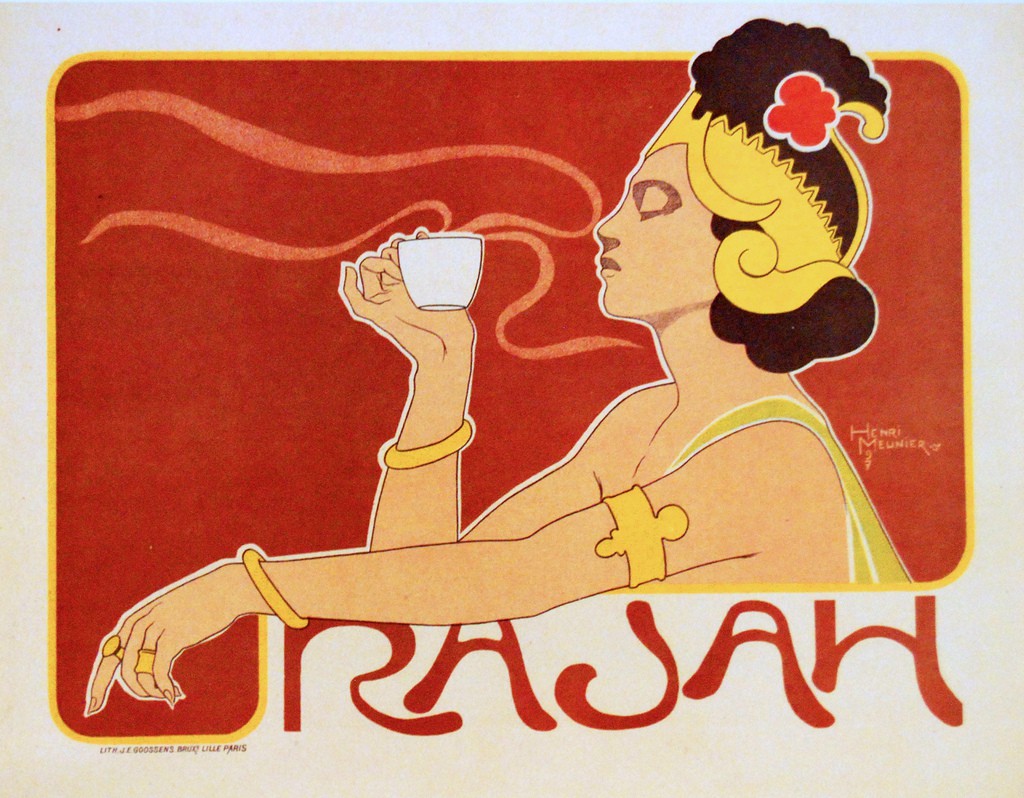
Sorry for the French jeu de mots in the title, a phonetic but silly link with a radiator… We try everything to catch your worthy attention, for sure! Similarly, the humorous image of Le Rajah was intended to promote the cheerful foxtrot-shimmy composed by the mysterious L. Aga. Le Rajah is one of those Orientalist sheet music covers caricaturing the South Asian world. It was published in 1923. We uncovered a photograph of what a Rajah looked like in the 1870s.

The Orientalist iconography at that time shows a lot of uniformity. What with the resemblance between our cover and the following gentlemen?

On the Lahore-based Chugtai’s Art Blog we found this exquisite drawing or print of a rajah.

The term rajah is often used synonymously with raja and maharaja, although there exist geographical and historical differences, and also distinction in rank. The rajah in Western culture is understood to be an Indian ruler or monarch. On the sheet music cover above he is represented as a bon vivant, perhaps powerful but still a genuine fatso. Probably unintentionally the cartoonish illustration also suggests that during more than a century Indian society hasn’t budged. The few hundred thousand inhabitants of the Établissements français dans l’Inde (the French colonies in India between 1769 and 1954) were thus supposed to never become part of the modern world. For a very long time, the Orientalist representation in Western culture gave the impression that all would be well if South Asia kept its culture and traditions unchanged, never to evolve.
Here is a collectible card of a series ‘Comptoir des indes‘ that seems to confirm this point of view.

On the reverse of the card, it says:
 ‘Pondichéry, Karikal, Chandernagor, Yanaon and Mahé, together with a few small neighbouring villages, that’s all that remains of France’s great colonial empire it had created in India and that was seized by
‘Pondichéry, Karikal, Chandernagor, Yanaon and Mahé, together with a few small neighbouring villages, that’s all that remains of France’s great colonial empire it had created in India and that was seized by
England at the end of the 18th century.
Lost in the vast British domain, these ports are of little use. They are for France rather a matter of self-esteem and have only a sentimental value.’
Having learned all that, let’s savour a cup of coffee!


Bravo ! Ik sta verstelt over de informatie die jullie iedere keer weer weten te vinden over jullie onderwerpen ! En daarbij zulke prachtige afbeeldingen !
Dat was weer genieten!
Vooral de detailvariaties van de ‘doubletten’ zijn verwonderlijk en eigenlijk onbegrijpelijke ingrepen of het moet een kleurdrukgang uitsparen, maar die variaties bedoelen we niet ………..
Volgens ons bekijken jullie alles permanent 24 uur per dag met een superzoeklichtvergrootglas en zo ontdekken jullie ook de complete illustraties, aflopend over voor-en achterzijde en dat niet alleen, maar ook nog ‘s schitterend digitaal gedocumenteerd!
Hartelijke groet, Rob en Anja